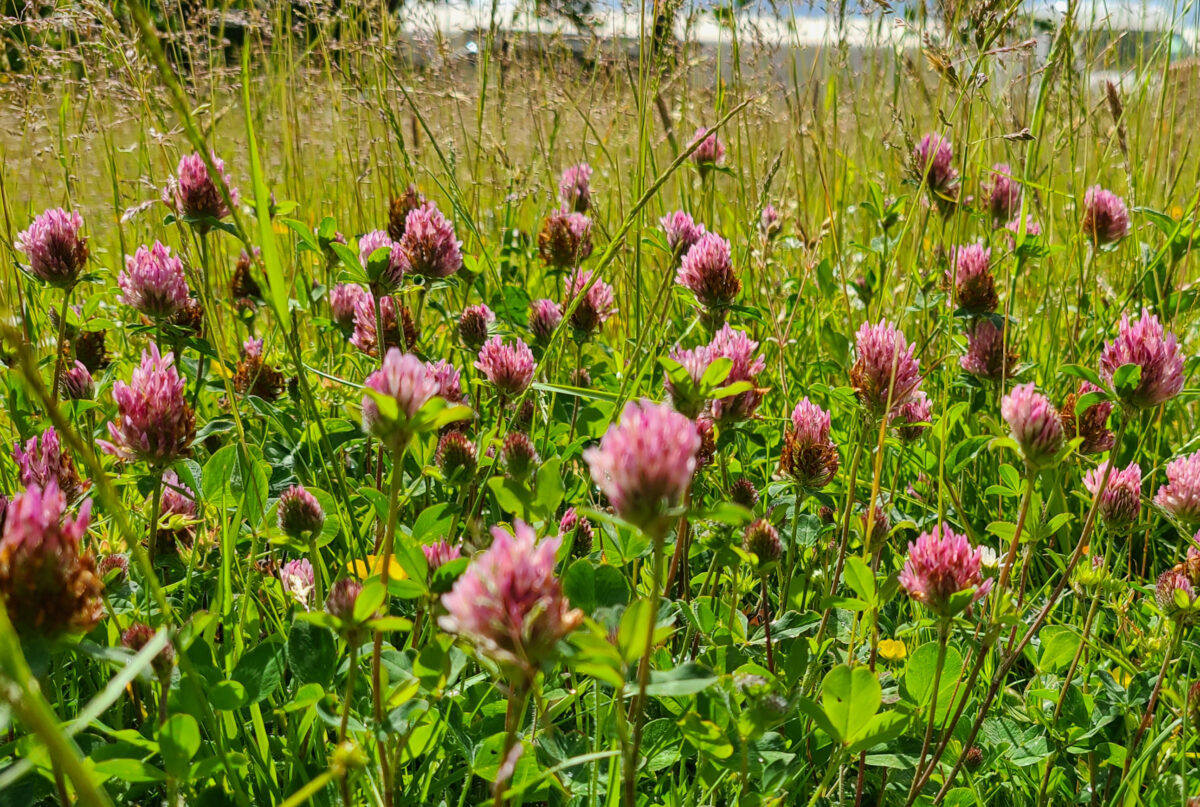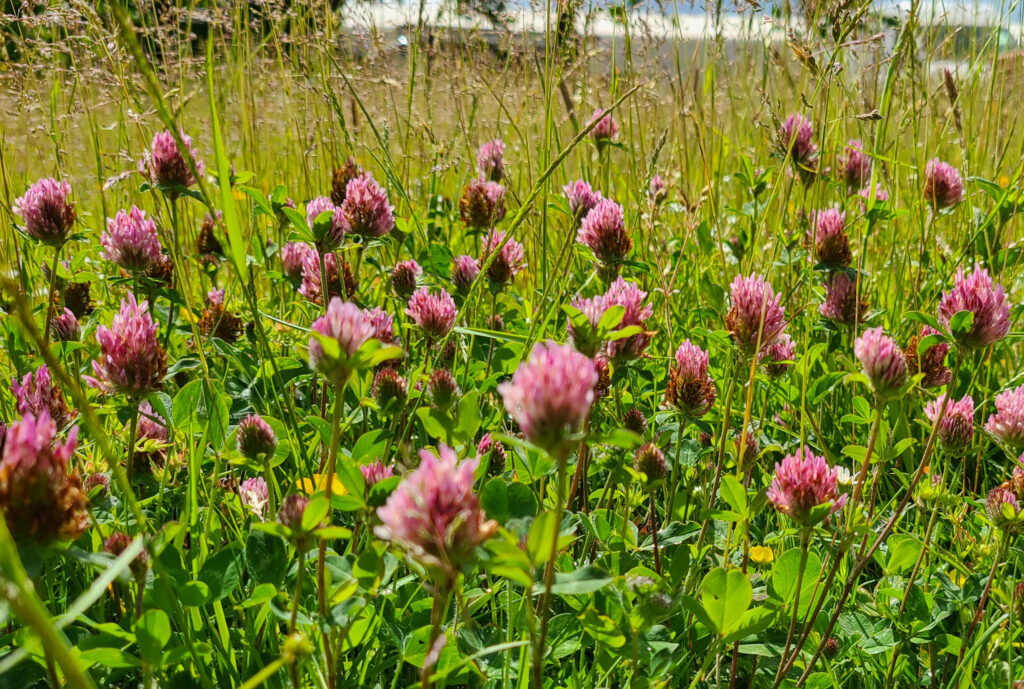
2025 marks the fifth year that NHBS has participated in Plantlife’s #NoMowMay campaign which encourages people across the UK to put away their lawnmowers and let their grass grow wild throughout the spring, with the aim of providing vital habitats for a wide range of species. As in previous years, we requested that the verges and lawns surrounding the premises be spared from mowing or strimming from late April and all through May to allow more plant species to flower.
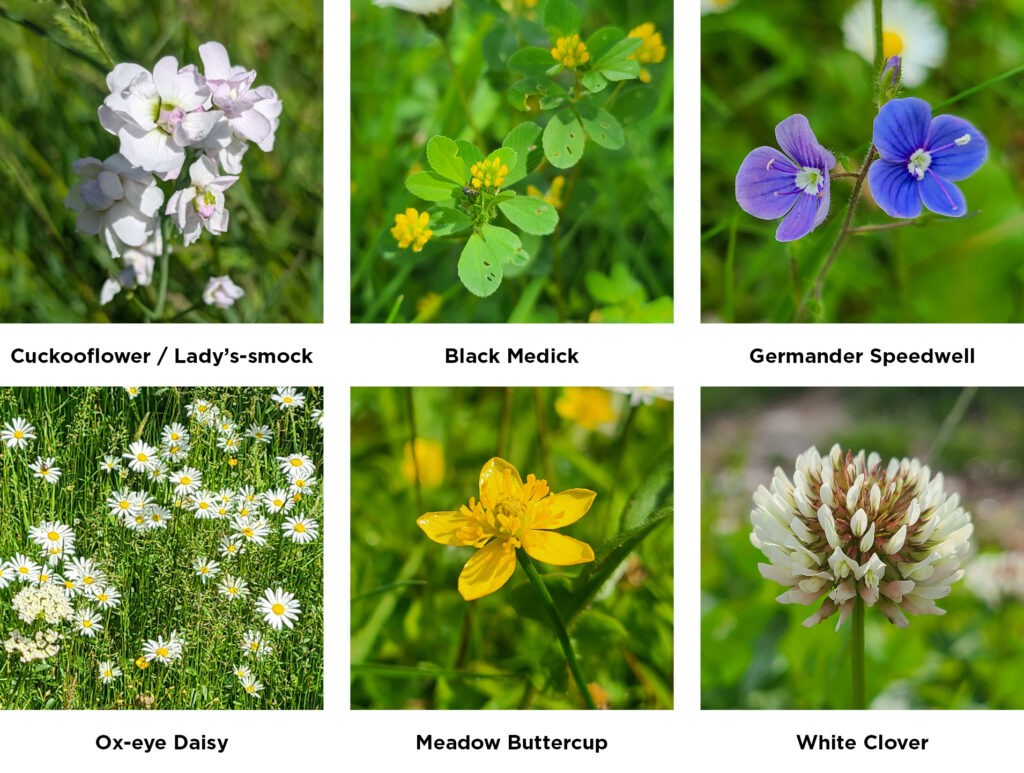
We’ve seen good numbers of daisies, buttercups and Germander Speedwell alongside a handful of charming clover species including Red and White Clovers and Black and Spotted Medick. Ribwort Plantain, Common Vetch, Ox-eye Daisy and docks are adding height in places and a handful of common grass species are present and swaying nicely.

We do have one beautiful Common Spotted Orchid flowering now as June begins, though sadly, there’s not been returning Bee Orchids this year, for the first time while we’ve been participating in the campaign.
There’s been a fair few bees, wasps, flies and beetles visiting the flowers, though invertebrate activity all round has felt somewhat diminished from previous years. Through May we had scattered sightings of Orange-Tip, Peacock and Tortoiseshell butterflies, and now as June is arriving Meadow Browns have emerged.
#NoMowMay is a fantastic initiative by Plantlife that has highlighted the importance of giving wild plants places to thrive through a crucial stage in their lifecycles and therefore enrich and advance the opportunities for pollinator species, and the wider web of life that depends upon green spaces, including us humans. It’s vital that spaces are left wilder for longer than May, and to encourage this, Plantlife are encouraging the public to let their lawns or grassy areas continue to bloom through June (and again, ideally beyond) with #LetitbloomJune! We’re hopeful that our lawn will be left to flower throughout the summer too.
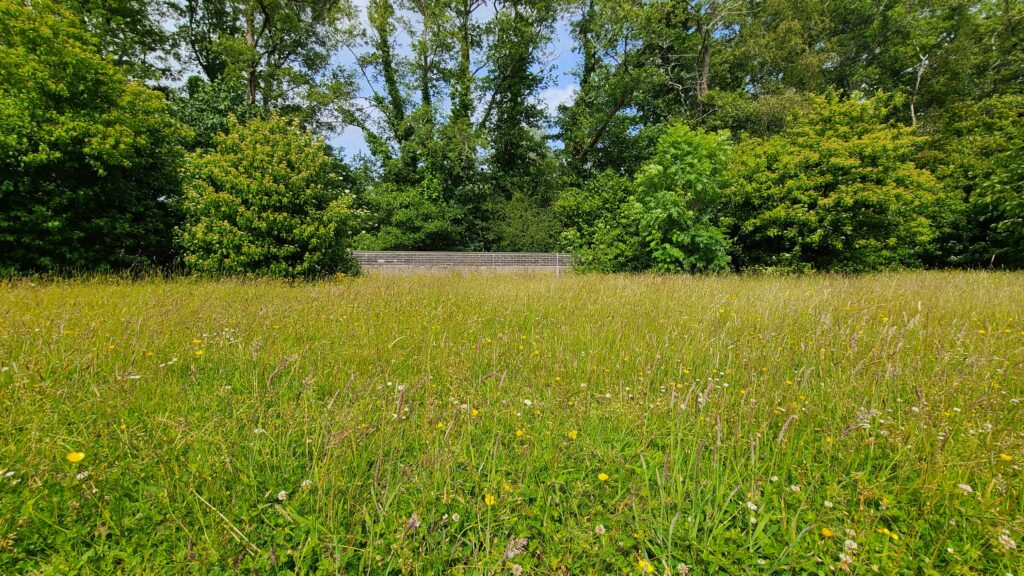
At NHBS we offer a large variety of books for learning more about habitat maintenance, the importance of species who rely on the restoration and reinvigoration of wilder spaces and many helpful field guides for identifying who’s growing in and visiting your local park or garden!
Suggested Reading
A Field Guide to Grasses, Sedges and Rushes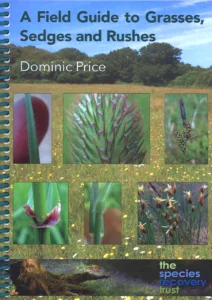
Spiralbound | April 2016
£13.99
 Harrap’s Wild Flowers: A Field Guide to the Wild Flowers of Britain & Ireland
Harrap’s Wild Flowers: A Field Guide to the Wild Flowers of Britain & Ireland
Paperback | February 2025
£20.00
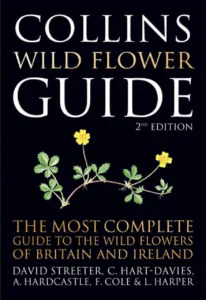 Collins Wild Flower Guide: The Most Complete Guide to the Wild Flowers of Britain and Ireland
Collins Wild Flower Guide: The Most Complete Guide to the Wild Flowers of Britain and Ireland
Paperback | June 2016
£24.99
 The Book of Wilding: A Practical Guide to Rewilding Big and Small
The Book of Wilding: A Practical Guide to Rewilding Big and Small
Hardback | May 2023
£35.00
 The Biodiversity Gardener Establishing a Legacy for the Natural World
The Biodiversity Gardener Establishing a Legacy for the Natural World
Hardback | April 2023
£25.00

